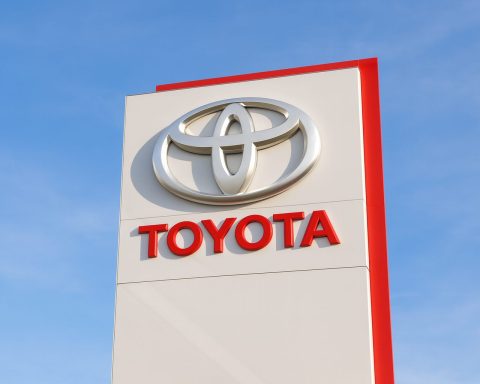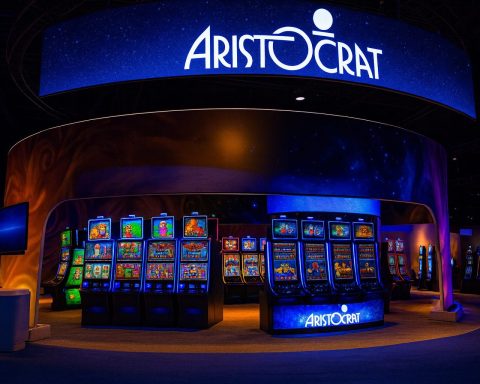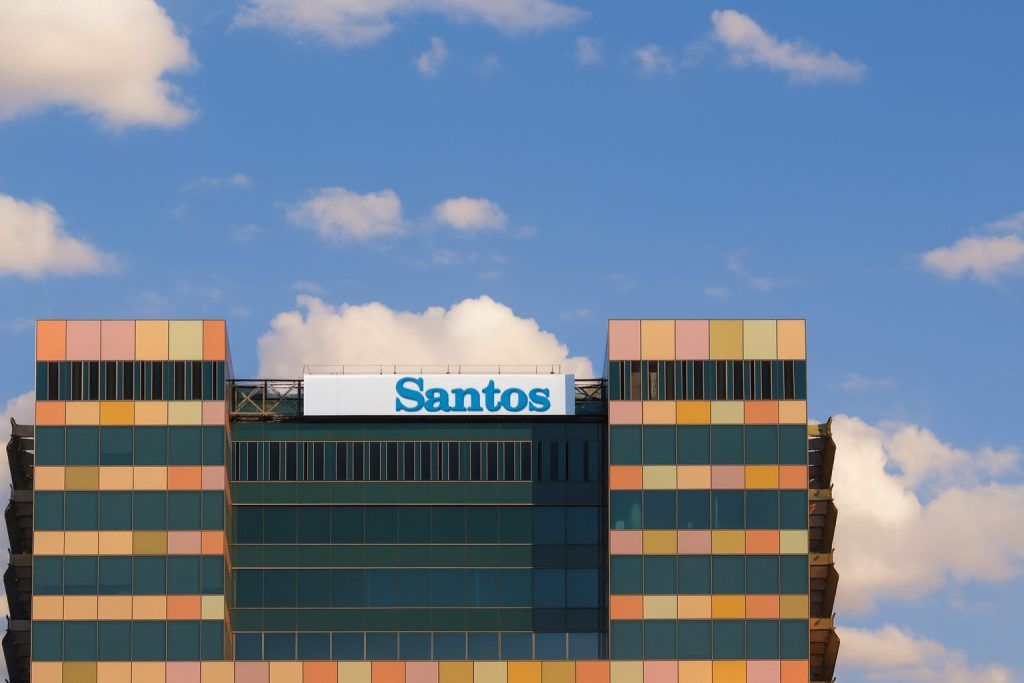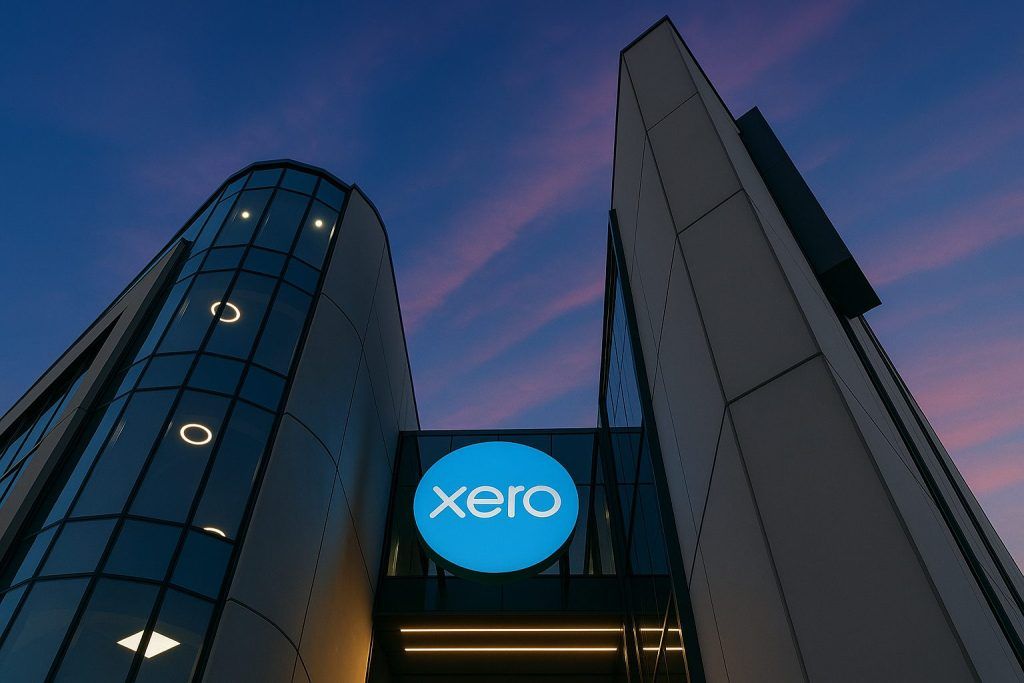Hitachi, Ltd. (TSE: 6501) shares opened firmly higher in Tokyo on Wednesday, November 26, 2025, extending the stock’s AI‑driven rally as local media highlighted new robotics technology and fresh “Hitachi”‑branded data‑center cooling solutions hit the headlines.
By 09:30 JST, Hitachi was trading at ¥4,835, up ¥125 (+2.65%) from Tuesday’s close of ¥4,710, after opening at ¥4,785 and touching an early intraday high of ¥4,836. Volume reached just under 1.9 million shares shortly after the open. [1]
The move helped lift the Nikkei as a whole: the index started the day 352.73 points higher at 49,012.25, with Reuters and Kabutan both noting Hitachi among blue‑chip gainers alongside Toyota and Sony. [2]
Hitachi stock price snapshot for November 26, 2025
Tokyo listing – TSE: 6501
- Last traded (early session): ¥4,835 [3]
- Change: +¥125 (+2.65%) vs. previous close of ¥4,710
- Intraday range (so far): ¥4,773 – ¥4,836 [4]
- 52‑week range: ¥2,590 (Apr 7, 2025) to ¥5,555 (Oct 31, 2025) [5]
- Market capitalization: ~¥22.15 trillion (about US$150bn at current FX) [6]
At around ¥4,800–4,835, Hitachi trades roughly 13% below its late‑October record high of ¥5,555, but still far above its spring lows. [7]
Valuation snapshot (company forecast, FY ending March 2026) [8]
- Forward PER: ~29.4×
- PBR: ~3.6×
- Forecast EPS: ~¥164.4
- ROE (actual): ~10.7%
- Equity ratio: ~44%
Those numbers place Hitachi squarely in “quality growth at a premium” territory rather than deep value: investors are clearly paying up for its AI, digital, and energy‑infrastructure story.
U.S. ADR – OTC: HTHIY
Overnight, Hitachi’s U.S. ADR (HTHIY) closed at US$30.75, down 0.29%, but Kabutan’s ADR ranking shows this still equated to about ¥4,798 per share – roughly ¥88 above the Tokyo close, implying a modest positive lead into today’s session. [9]
What’s moving Hitachi today? AI robotics and data‑center cooling
1. AI‑stabilised robot motion grabs headlines
Japanese market commentary this morning repeatedly flags Hitachi as a stock to watch thanks to new robot‑control technology.
Kabutan’s “three points to watch before the morning session” and Yahoo Japan’s news‑driven stock material list both cite a newspaper report headlined:
“日立〈6501〉ロボ動作を安定・高速化、制御技術でAI補正”
“Hitachi (6501) stabilizes and speeds up robot motion with AI‑corrected control technology.” [10]
The article refers to Hitachi’s development work on AI‑based real‑time motion control, which uses sensing and deep‑learning algorithms to correct robot movement so that tasks such as cable routing, valve operation, or delicate handling can be performed both faster and more stably than under conventional control.
That dovetails with a separate piece last week from Nippon.com, which reported that Hitachi demonstrated a humanoid‑style robot whose head and arms are autonomously controlled by AI, performing fine wiring and valve‑turning tasks at its R&D base in Kokubunji. [11]
For equity investors, this robotics news matters less for near‑term revenue and more as a proof point in Hitachi’s “Physical AI” narrative: applying AI to systems that interact with the real world, from factories and infrastructure to transportation and energy.
2. New “Hitachi” chillers for Southeast Asia’s data‑center boom
Elsewhere on today’s newswire, a PR Newswire release picked up by Bastillepost highlights new Hitachi‑branded HVAC solutions for large data centres in Southeast Asia. [12]
Key points from the release:
- The Hitachi Cooling & Heating brand (now manufactured and sold by Bosch Home Comfort Group) launched new S, VG and VM Series centrifugal chillers targeting hyperscale and enterprise data centres.
- The systems can restart in as little as 35 seconds after a power failure, a critical feature for uptime‑sensitive AI and cloud workloads.
- The chillers use low‑GWP refrigerants (R513A, R1233zd, R1234ze) and direct‑drive inverter technology that automatically adjusts cooling to demand and seasonal temperatures, reducing energy consumption and operational costs.
- Case studies include deployments for a top U.S. cloud provider in Hong Kong and a Japanese tech group data centre in Indonesia, underscoring the brand’s relevance in the regional AI/data‑centre ecosystem. [13]
While these HVAC products are now part of Bosch’s portfolio rather than Hitachi, Ltd.’s consolidated group, the continued use of the Hitachi brand in mission‑critical data‑centre infrastructure reinforces the perception that “Hitachi” equals reliable, high‑efficiency hardware for AI‑era workloads—helpful soft power for the listed company’s broader narrative.
3. Strong ADR tone and global risk‑on
Kabutan’s ADR report shows broad buying in Japanese blue chips in U.S. trading, with Hitachi’s ADR priced above its local close, alongside gains in names like JT, Murata Manufacturing and Sony. [14]
Combined with:
- A 664‑point surge in the Dow and a strong Nasdaq close overnight, as U.S. rate‑cut hopes firmed, and [15]
- A 352‑point jump in the Nikkei at the open, with Toyota, Sony and Hitachi all up more than 1%, [16]
that risk‑on backdrop is clearly amplifying stock‑specific AI headlines.
Recent fundamentals: earnings beat and upgraded guidance
Hitachi’s move today doesn’t come out of nowhere. It builds on a very strong set of half‑year results and a visibly accelerating AI / energy‑infrastructure strategy.
In its results for the quarter ended September 30, 2025 (FY2026 Q2), Hitachi reported: [17]
- Revenue: ¥4.787 trillion, +5.3% YoY
- Adjusted operating profit: ¥508.0 billion, +25.5% YoY
- Net income attributable to parent: ¥472.8 billion, +61.8% YoY
Management also raised full‑year FY2026 net profit guidance from around ¥710 billion to roughly ¥750 billion, implying more than 20% year‑on‑year growth, even though the new target sits a little below the analyst consensus near ¥760 billion. [18]
Markets cheered: Reuters noted that after the earnings release in late October, Hitachi shares jumped nearly 12% to a record high of ¥5,555, contributing significantly to the Nikkei’s rally at the time. [19]
Independent analysis from Simply Wall St pointed out that Hitachi’s statutory EPS came in about 60% above prior forecasts, with revenue broadly in line, suggesting the beat was driven by margins and efficiency rather than one‑offs. [20]
Strategic AI and energy moves investors are watching
Today’s robotic‑control headline slots neatly into a broader set of AI and infrastructure initiatives announced in recent months:
1. Strategic partnership with OpenAI on global AI data centres
On October 21, 2025, Hitachi and OpenAI announced a Memorandum of Understanding to build a strategic partnership focused on next‑generation AI infrastructure and sustainable global data centres. [21]
The collaboration spans:
- Outside the data centre:
- Minimizing load on power transmission and distribution networks
- Moving towards zero‑emission data centres
- Securing long‑lead‑time equipment
- Standardizing modular, prefabricated data‑centre designs
- Inside the data centre:
- Co‑developing cooling systems and storage solutions to support rapid AI data‑centre deployment
- Software layer:
- Deeper integration of OpenAI’s language models into Hitachi’s Lumada and HMAX platforms to enhance industrial AI solutions.
This MOU reinforces the idea that Hitachi sits at the intersection of power grids, cooling, data‑centre hardware, and AI software—a powerful story for long‑term investors.
2. NVIDIA‑powered “AI Factory” for Physical AI
In September, Hitachi announced a global “Hitachi AI Factory” based on NVIDIA’s AI Factory reference architecture, using NVIDIA Blackwell GPUs and networking to create a unified compute fabric across the U.S., EMEA and Japan. [22]
The goal: accelerate Physical AI—AI that senses, reasons and acts in the real world—across key sectors such as:
- Mobility (e.g., Hitachi Rail’s HMAX platform)
- Energy and grid optimisation
- Industrial automation and manufacturing
This is exactly the backdrop against which today’s AI‑controlled robotics stories are being interpreted by the market.
3. Acquisition of data & AI consultancy synvert
Also in September, Hitachi agreed to acquire synvert, a German data and AI services firm with over 550 specialists and more than 200 clients, via its U.S. subsidiary GlobalLogic. [23]
Synvert brings:
- Deep expertise in data governance, lakehouse architectures and MLOps
- Strong partnerships with Databricks, Snowflake and major hyperscalers
- A footprint across Germany, Switzerland, Spain, Portugal and the Middle East
Hitachi explicitly framed the deal as a way to accelerate deployment of HMAX and Agentic/Physical AI solutions across energy, transport and industrial customers.
4. Massive U.S. energy‑grid investment and grid‑services build‑out
On the energy side, Hitachi is leaning hard into electrification and grid modernization, a crucial bottleneck for AI data‑centre growth:
- In early September, Hitachi Energy (a wholly owned subsidiary) announced more than US$1 billion of investment in U.S. grid infrastructure, including around US$457 million for a new large‑power‑transformer factory in South Boston, Virginia—touted as the largest such facility in the country. [24]
- On October 28, Hitachi signed an agreement with the U.S. Department of Commerce to promote investment in U.S. grid modernization, explicitly linking the initiative to surging electricity demand from AI data centres. [25]
- On October 29, Reuters reported that Hitachi Energy acquired a minority stake in Shermco, a U.S. electrical‑services firm recently bought by Blackstone, aiming together to build North America’s largest grid‑services provider, with a specific focus on data centres, utilities and industrial clients. [26]
These moves position Hitachi not just as a supplier of AI software and industrial OT, but as a core enabler of the power infrastructure AI needs.
5. Ongoing portfolio reshaping and share repurchases
Hitachi has also been reshaping its portfolio and returning capital:
- Multiple IR notices in October and November confirm ongoing share repurchase programmes, signalling management’s confidence in long‑term value. [27]
- Separate announcements around share transfers and changes in equity‑method associates (including a stake sale in Hitachi Construction Machinery) highlight the continued shift away from lower‑margin, cyclical assets toward higher‑growth digital and energy platforms. [28]
How bullish are analysts on Hitachi now?
Analyst sentiment toward Hitachi has turned decisively positive after the Q2 beat and AI announcements.
Consensus: “Strong Buy” with double‑digit upside
According to Investing.com’s consensus data:
- 14 analysts now cover Hitachi
- The average 12‑month target price is about ¥5,415, with a range from ¥3,900 to ¥6,300
- The consensus rating is “Strong Buy”, with 13 Buys and 1 Hold and no Sell ratings. [29]
From today’s level around ¥4,800–4,835, that implies roughly 12–13% upside on average, with the more bullish houses seeing scope for about 30% gains if Hitachi executes on its AI and grid‑investment roadmap.
Key recent target‑price moves
Several brokers and research houses have refreshed their targets in November:
- Nomura Securities: Maintains “Buy”, raising its target price from ¥5,200 to ¥6,100, citing high growth potential from the strengthening of Hitachi’s AI ecosystem and digital businesses. [30]
- Goldman Sachs: Lifts its target to ¥5,900, highlighting Hitachi’s role in industrial AI and the upside from AI‑related capital expenditure and grid‑modernization demand. [31]
- Jefferies: Raises its target from ¥4,600 to ¥6,000, reiterating a Buy rating and pointing to structural tailwinds in electrification, data‑centre infrastructure and rail. [32]
- TipRanks (JP:6501): Shows the most recent rating as Buy with a price target around ¥5,340, consistent with the broader bullish consensus. [33]
Yahoo Finance’s valuation commentary notes that Hitachi delivered a one‑month share‑price return of roughly 25.5% and a 12‑month return around 37.6%, and argues that while the stock no longer looks cheap on simple multiples, its growth and strategic positioning justify much of the premium. [34]
Risks and what to watch next
Despite today’s upbeat tone, there are important risks and uncertainties investors should keep in mind:
- Valuation risk
- At around 29× forward earnings and close to 3.6× book value, Hitachi trades at elevated multiples versus many traditional Japanese industrials. If growth or margins disappoint, the derating could be sharp. [35]
- Execution risk in AI & M&A
- Integrating synvert into GlobalLogic, scaling the NVIDIA‑based AI Factory, and translating cutting‑edge robotics demos into repeatable, profitable products are all non‑trivial execution tasks. [36]
- Project and policy risk in energy investments
- Large U.S. investments in transformer production and grid infrastructure depend on policy continuity, project approvals and stable demand from utilities and data‑centre operators. Delays or policy shifts could affect returns. [37]
- Macro and FX sensitivity
- Hitachi still generates a substantial portion of revenue overseas. A stronger yen or a slowdown in global capex—particularly in data centres, rail and industrial automation—could weigh on earnings. [38]
- Segment‑level volatility
- Earlier commentary around Hitachi’s results has flagged challenges at some businesses, such as Hitachi Astemo, and the impact of currency swings. Sustained underperformance in any major segment could dilute the group’s AI/energy growth story. [39]
Bottom line: what today’s move in Hitachi stock means
Today’s rally in Hitachi shares is more than just a macro bounce. The combination of:
- Fresh local headlines about AI‑driven robotics control,
- A new Hitachi‑branded data‑centre cooling launch in Southeast Asia, and
- A recent track record of earnings beats, AI partnerships, and grid‑investment announcements,
is reinforcing the view of Hitachi as a core Japan‑listed play on AI, Physical AI, and energy infrastructure.
At around ¥4,800–4,835, the stock is no longer cheap, but with consensus targets clustered in the low‑to‑mid ¥5,000s and several brokers pushing targets toward ¥6,000–6,100, the market is effectively pricing in continued double‑digit earnings growth and successful execution of the AI + electrification roadmap. [40]
For investors, the key questions from here are:
- Can Hitachi convert its AI and robotics R&D—like today’s robot‑motion control news—into scalable, high‑margin solutions across factories, rail and infrastructure? [41]
- Will its massive grid and transformer investments stay on time and on budget, and will U.S. energy and AI policy remain supportive through the build‑out? [42]
- And can management balance shareholder returns (via buybacks and portfolio pruning) with the heavy capex and M&A required to stay ahead in AI and electrification? [43]
As of today, November 26, 2025, the market’s answer is still “yes”—but at current valuations, Hitachi increasingly looks like a high‑conviction growth story that will need to keep delivering to justify its premium.
References
1. finance.yahoo.co.jp, 2. jp.reuters.com, 3. finance.yahoo.co.jp, 4. finance.yahoo.co.jp, 5. finance.yahoo.co.jp, 6. finance.yahoo.co.jp, 7. finance.yahoo.co.jp, 8. finance.yahoo.co.jp, 9. kabutan.jp, 10. kabutan.jp, 11. www.nippon.com, 12. www.bastillepost.com, 13. www.bastillepost.com, 14. kabutan.jp, 15. kabutan.jp, 16. jp.reuters.com, 17. finance.yahoo.co.jp, 18. finance.yahoo.co.jp, 19. jp.reuters.com, 20. simplywall.st, 21. www.hitachi.com, 22. www.hitachi.com, 23. www.hitachi.com, 24. www.hitachi.com, 25. www.reuters.com, 26. www.reuters.com, 27. www.hitachi.com, 28. www.hitachi.com, 29. www.investing.com, 30. www.moomoo.com, 31. www.investing.com, 32. www.moomoo.com, 33. www.tipranks.com, 34. finance.yahoo.com, 35. finance.yahoo.co.jp, 36. www.hitachi.com, 37. www.hitachi.com, 38. finance.yahoo.co.jp, 39. www.tipranks.com, 40. www.investing.com, 41. kabutan.jp, 42. www.hitachi.com, 43. www.hitachi.com







